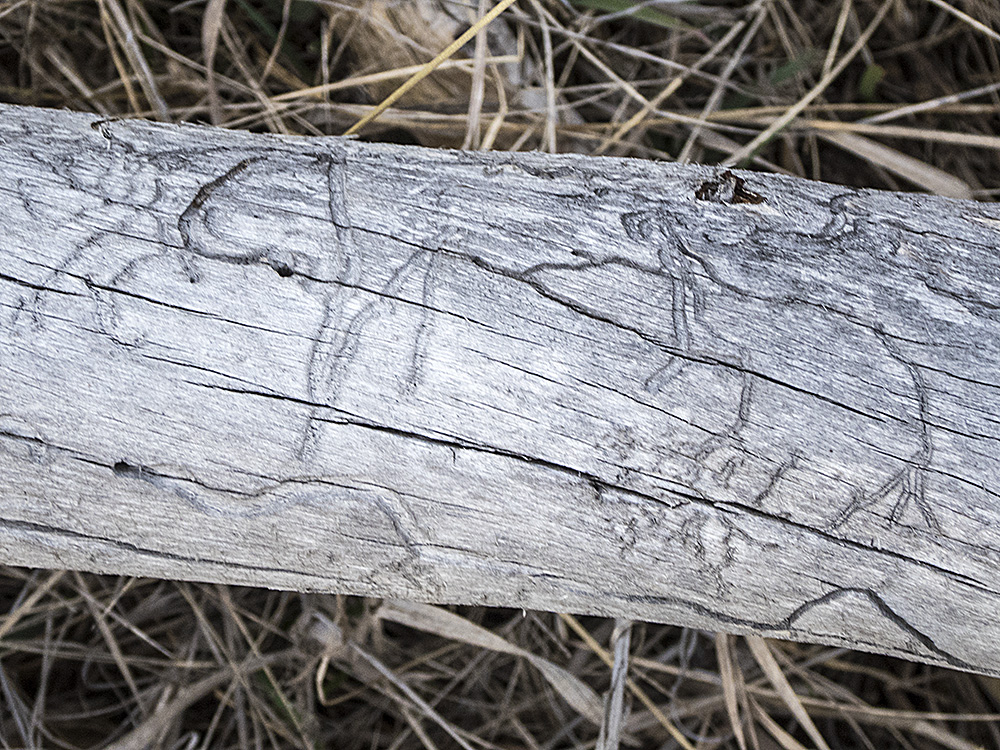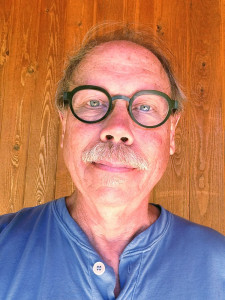 By guest contributor Jim Frazer
By guest contributor Jim Frazer
I’ve been trying to remember what led me to photograph the engraved tracks of bark beetles. I believe that really it was just curiosity about looking for lines and patterns in nature which first drew my attention to the etched pathways of the beetle larvae. Once I became aware of them, they seemed to be everywhere in the woods. In an effort to understand what I was looking at, I did some research, and found out that the beetles’ increased range and activity was due to warming.
Since climate change seemed to come on us slowly at first, it was easy for many people to not notice. We may ask ourselves, what was the first thing that we personally noticed that could be attributed to climate change? Not a prediction from scientists, but something we personally saw or experienced. Not a cause, but a result. For me, the beetle tracks were like this. Of course, we all experience unusual weather, but since, like many people, I’m not living in the place where I grew up, I don’t have a feel for what is really normal for the area. Having someone tell you that last summer was the hottest ever doesn’t mean much if you don’t have memories to compare it to. Seeing something concrete right in front of you is different.
Part of what artists do is to call attention to things that have been overlooked, and do so in a way that causes people to start noticing on their own. We hear many debates in which the opinions of experts are hurled back and forth, but in order for change to happen, people need to be convinced through their personal experience. So I would like to encourage people looking at my work to notice small things they see around them and investigate how they relate to the larger world. I see the beetle tracks as calligraphic characters from an unknown language, hence the title Glyphs. Of course, they don’t have individual, specific meanings, like, say, a Chinese character might have. They are meant to suggest the idea that if we notice our surroundings – our environment – it will speak to us and tell us important things. In this case, the message is the awareness that climate change is causing a different relationship between these insects and the forest, to the detriment of the trees.
Here are both the original picture of a tree trunk and the finished artwork for one of my works in the exhibit. Like a scientist exploring ancient inscriptions, I trace the patterns, first manually, then digitally. The resulting outlines are printed on very thin tissue. Then, just as the beetle larva takes many small bites, I use a paper drill to create a repetitive lace pattern of holes surrounding the outlines. Finally, metallic mica powder is applied inside the outlines, adhered with gilding sizing.
 Jim Frazer was, in 1981, the first photographer to have a solo exhibit at Atlanta’s High Museum of Art, and his hand-colored photographs of Southern landscapes were widely collected and exhibited both regionally and nationally. In 1999, he moved with his family to Salt Lake City and branched out from photography to a diverse practice that focused on mixed media works and collaborative installations. His newest work, though not appearing photographic at first glance, is nevertheless photo based, deriving from images of details taken from the natural world.
Jim Frazer was, in 1981, the first photographer to have a solo exhibit at Atlanta’s High Museum of Art, and his hand-colored photographs of Southern landscapes were widely collected and exhibited both regionally and nationally. In 1999, he moved with his family to Salt Lake City and branched out from photography to a diverse practice that focused on mixed media works and collaborative installations. His newest work, though not appearing photographic at first glance, is nevertheless photo based, deriving from images of details taken from the natural world.
